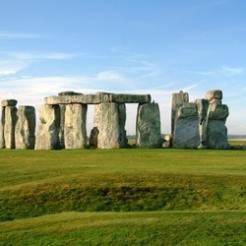The government has confirmed that it will press ahead with plans to split English Heritage in two and set up a charity even though a “significant minority” of respondents to its consultation thought the £80m allocated for the project will not be enough.
The Department for Culture Media and Sport received 600 responses to the consultation, with 60 per cent of them broadly agreeing with the government's proposals.
Plans were announced in the 2013 spending review to establish a charity to run properties in the National Heritage Collection while those 400 properties would remain in public ownership. The charity will be known as English Heritage and the government body will be known as Historic England.
Initially £80m was set aside to restore and improve sites over an eight-year period. By 2022/23 the government anticipates that the charity will be self-funding. It has since allocated a further £8.5m to fund the implementation of the new infrastructure.
Of those who did not agree, “a significant minority of respondents did not feel that the £80m was enough to clear the conservation deficit and support the development of the capital programme,” according to the DCMS consultation response published this week.
In response the government has published the summary version of the business case review, which includes a summary of the business plan for the charity.
It has also published a letter from the Culture Secretary, Sajid Javid, to Sir Laurie Magnus, chair of English Heritage, which makes it clear there will be no reduction to the allocated budget for 2014/15 and 2015/16.
Javid said: “The new model business plan is convincing in demonstrating that the freedoms of being a charity will bring very substantial future benefits. £58m in additional income over eight years, £62m raised in third-party philanthropic donations, and a 48 per cent increase in members to 1.2 million will mean the charity will be self-funding by 2022/23.”
Responding to the announcement Ingrid Samuel, historic environment director at the National Trust, said: “One immediate concern is whether English Heritage will be able to build up sufficient reserves early enough to cushion them in moments of need. We have always said that it is vital that Historic England is insulated from the business risks of the new charity.”
Relationship between the new bodies
The DCMS consultation response notes a number of requests for clarity on the relationship between the two organisations, particularly when it comes to English Heritage’s role as the owner of last resort and adding new sites to the collection.
Historic England would initially be responsible for taking on sites if no other option existed, and carrying out repair work. It could then pass it on to a private owner or charity. If that is not possible it could ask English Heritage to take on responsibility for the site’s management as part of the National Heritage Collection.
English Heritage would automatically be expected to take on sites with an annual liability of less than £25,000. For sites with a larger liability the charity would be expected to negotiate an agreement with Historic England.
The consultation response also reveals that “a minority of charity trustees will also be commissioners”.
“The shared board membership will be helpful in managing the shared responsibility for caring for the historic properties,” the report added. The organisation will soon begin recruiting external trustees.









